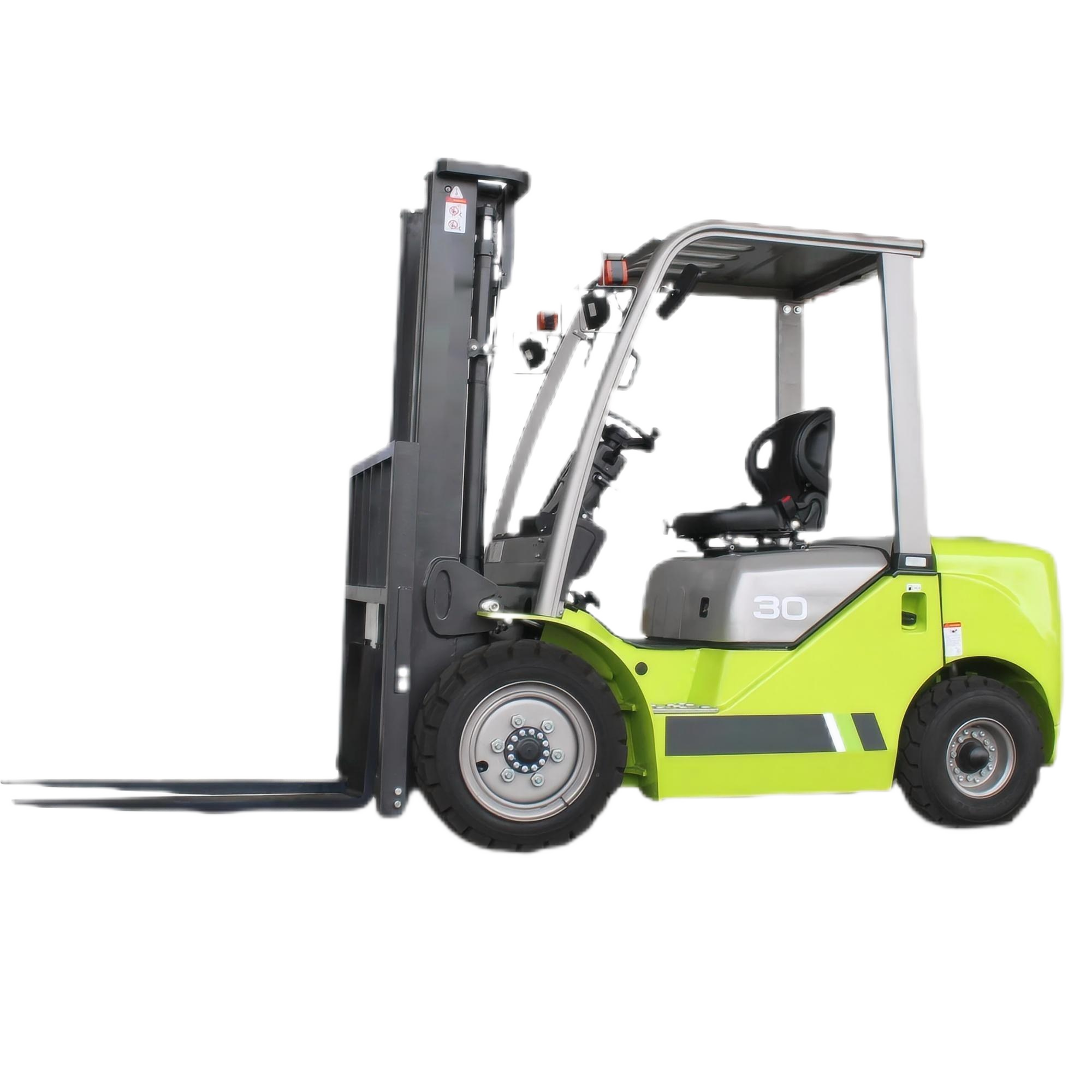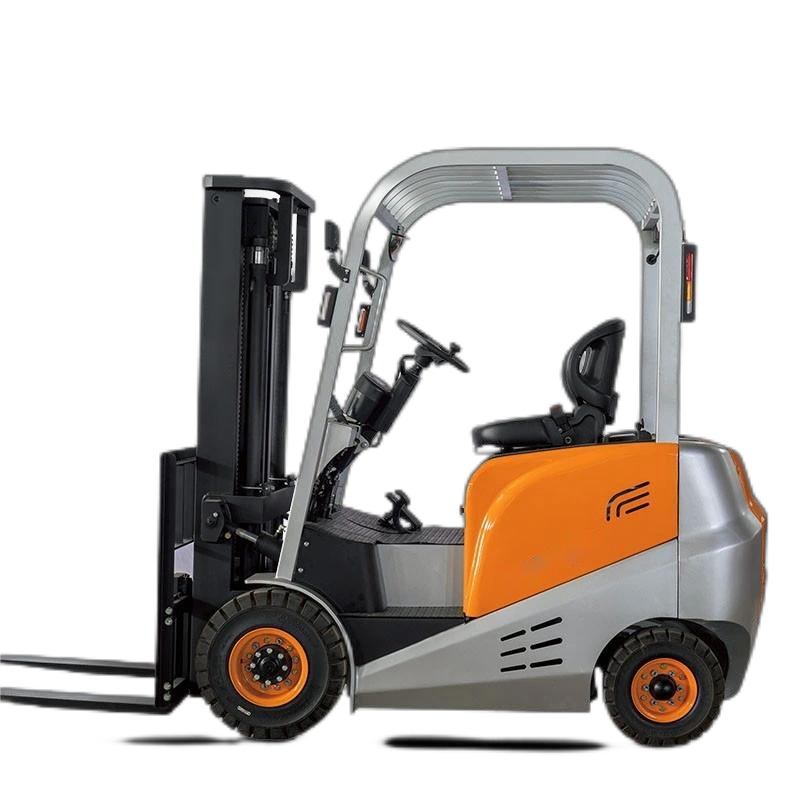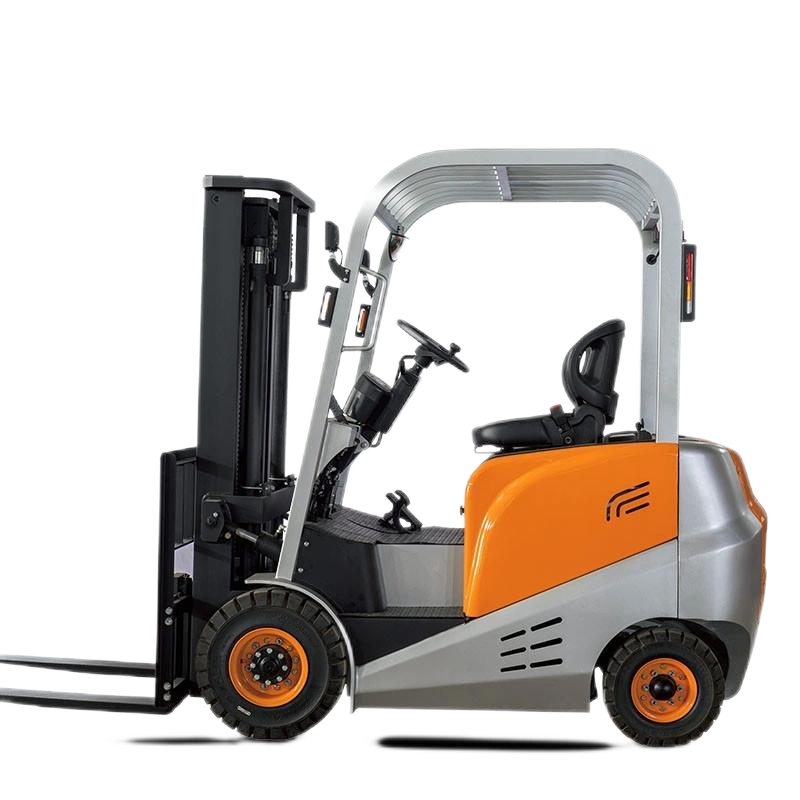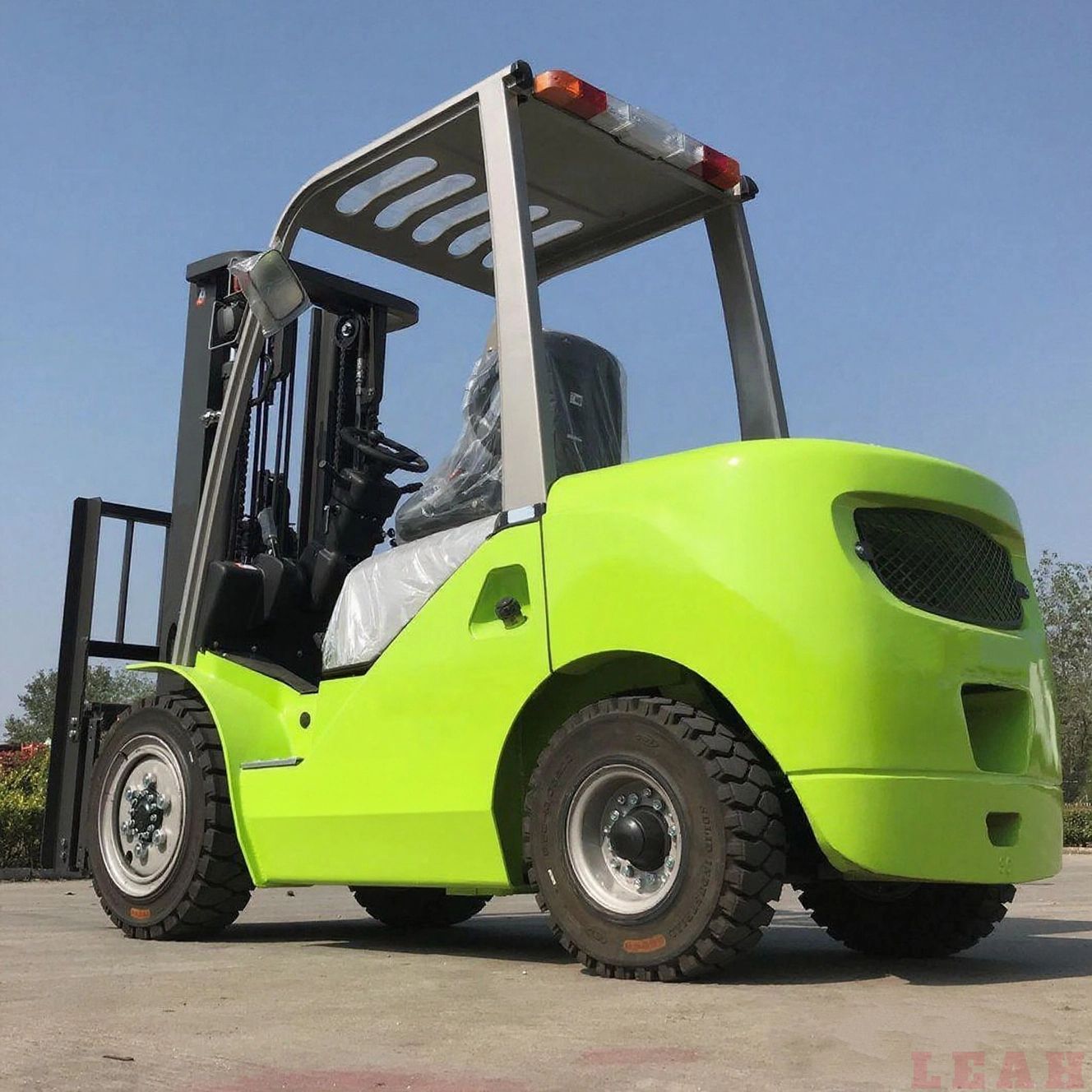When choosing between an electric forklift and a gas forklift, the decision depends on your specific operational needs—such as indoor/outdoor use, lifting capacity, running costs, maintenance requirements, and environmental regulations. Below is a detailed comparison of the two types across key dimensions, along with guidance on which is better suited for different scenarios.
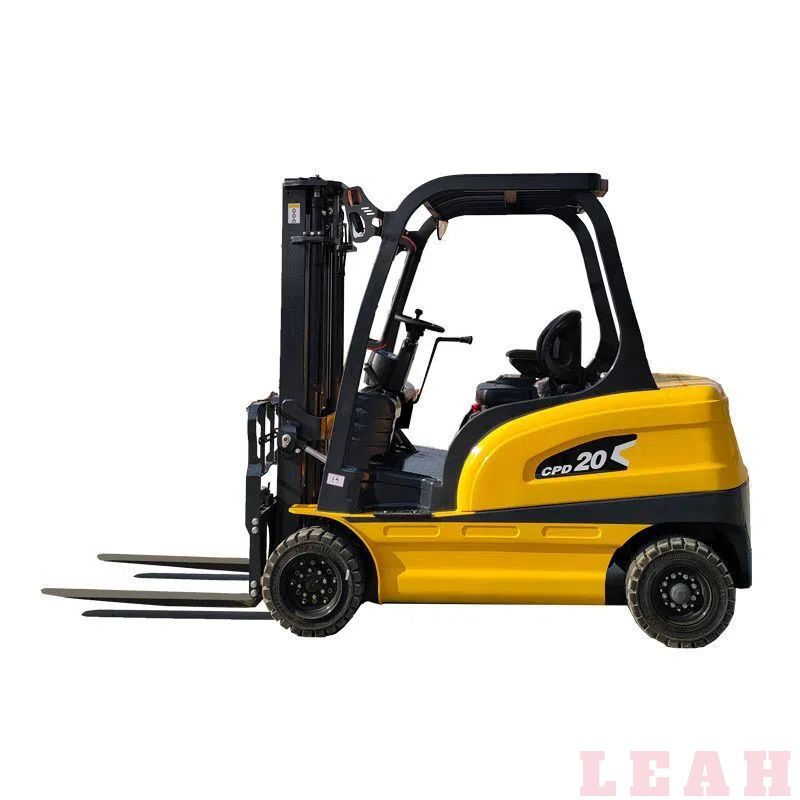
1. Core Power Source & Operational Environment
The fundamental difference between the two lies in their power systems, which directly dictate where they can be used.
| Feature | Electric Forklift | Gas Forklift (Gasoline/LPG/Propane) |
|---|---|---|
| Power Source | Rechargeable lead-acid or lithium-ion (Li-ion) batteries (typically 24V/36V/48V). | Combustion engine fueled by gasoline, liquefied petroleum gas (LPG), or propane. |
| Emissions | Zero tailpipe emissions (only indirect emissions from electricity generation). | Produces exhaust gases (CO, CO₂, NOₓ, hydrocarbons) and noise pollution. |
| Ideal Environment | Indoor spaces (warehouses, factories, distribution centers) or enclosed areas—critical for worker air quality and compliance with indoor emission rules (e.g., OSHA standards). | Outdoor or well-ventilated indoor spaces (construction sites, loading yards, docks)—exhaust and noise are less problematic here. |
| Weather Resistance | Less durable in extreme weather: Batteries perform poorly in sub-zero temperatures (-10°C/14°F or lower); exposure to heavy rain/snow risks electrical short circuits (requires weatherproofing for outdoor use). | More robust in harsh conditions: Combustion engines tolerate high/low temperatures (-30°C to 40°C/-22°F to 104°F) and wet environments better. |
2. Performance & Productivity
Performance factors like lifting capacity, runtime, and refueling/recharging speed directly impact daily operations.
| Performance Metric | Electric Forklift | Gas Forklift |
|---|---|---|
| Lifting Capacity | Typically 1.5–5 tons (ideal for light-to-medium loads). Heavy-duty models (up to 10 tons) exist but are less common and more expensive. | Wider range: 1–15+ tons (common for heavy-duty tasks like lifting steel, pallets of concrete, or shipping containers). |
| Runtime per Charge/Fuel | Lead-acid batteries: 6–8 hours of continuous use (requires 8–10 hours to recharge + 2 hours of "equalization" for battery health). Li-ion batteries: 8–12 hours of use, with fast charging (50% charge in 1–2 hours). | LPG/gasoline: 8–12 hours of continuous use (refueling takes 5–10 minutes—far faster than recharging electric models). |
| Torque & Speed | Instant torque at low speeds (excellent for precise indoor maneuvering, e.g., navigating narrow warehouse aisles). Top speed is lower (8–12 km/h). | Higher maximum speed (12–18 km/h) and sustained torque for heavy outdoor tasks (e.g., hauling loads up ramps or rough terrain). |
| Altitude Performance | Unaffected by altitude (electric motors don’t rely on oxygen). | Performance degrades at high altitudes (combustion engines need oxygen—power drops by ~3–5% per 1,000 meters). |
3. Cost: Initial vs. Long-Term
Electric forklifts have higher upfront costs, but gas forklifts incur more ongoing expenses—this is a key tradeoff.
| Cost Category | Electric Forklift | Gas Forklift |
|---|---|---|
| Initial Purchase Cost | 30–50% higher than gas models. For example: A 3-ton electric forklift costs $25,000–$35,000; a comparable gas model costs $15,000–$25,000. Li-ion models are even pricier (add 20–30% vs. lead-acid). | Lower upfront cost—ideal for businesses with tight initial budgets. |
| Fuel/Charging Cost | Extremely low: $0.50–$1.00 per hour of use (based on average electricity costs of $0.15/kWh). Li-ion batteries are 10–15% more efficient than lead-acid. | Higher fuel costs: $3–$5 per hour of use (LPG costs ~$2.50/gallon; a forklift uses 1–2 gallons per hour). |
| Maintenance Cost | 30–50% lower over 5 years. Electric models have fewer moving parts (no engine, oil, filters, or spark plugs). Routine maintenance only includes battery checks, tire rotations, and brake inspections. | Higher maintenance: Requires regular oil changes, filter replacements, spark plug service, and engine tune-ups. Annual maintenance costs are $1,000–$2,000 (vs. $500–$1,000 for electric). |
| Battery Replacement Cost | Lead-acid batteries: Replace every 3–5 years ($3,000–$5,000). Li-ion batteries: Replace every 5–8 years ($5,000–$8,000). | No battery replacement—only fuel system upkeep (e.g., cleaning carburetors, replacing fuel lines). |
| Total Cost of Ownership (TCO) Over 5 Years | Lower TCO for most users: A 3-ton electric forklift has a 5-year TCO of ~$35,000–$45,000 (vs. $40,000–$55,000 for a gas model). | Higher TCO—fuel and maintenance costs add up over time. |
4. Maintenance & Safety
Maintenance complexity and safety risks differ significantly, affecting uptime and worker well-being.
Maintenance Requirements
| Aspect | Electric Forklift | Gas Forklift |
|---|---|---|
| Moving Parts | ~20 moving parts (simple design: motor, battery, brakes, steering). | ~200+ moving parts (engine, transmission, fuel system, exhaust system). |
| Routine Tasks | - Check battery water level (lead-acid only). - Clean battery terminals. - Inspect tires and brakes monthly. | - Oil change every 250–500 hours. - Replace air/fuel filters every 500 hours. - Tune engine every 1,000 hours. - Inspect exhaust system for leaks (critical for safety). |
| Uptime Risk | Risk of downtime if batteries die unexpectedly (mitigated with spare batteries or fast-charging Li-ion models). | Risk of downtime from engine failures (e.g., clogged fuel lines, overheating) or exhaust leaks. |
Safety Considerations
| Safety Risk | Electric Forklift | Gas Forklift |
|---|---|---|
| Fire/Explosion Risk | Low: No flammable fuel—only a small risk of battery overheating (prevented by proper charging). | Higher: Flammable gasoline/LPG—risk of leaks, fires, or explosions (requires proper ventilation and no open flames near refueling). |
| Toxic Exposure | None: Zero exhaust—safe for indoor workers (no risk of CO poisoning). | High: Exhaust contains CO (toxic) and NOₓ (irritating)—unsafe for enclosed spaces (OSHA limits CO to 50 ppm over 8 hours). |
| Noise Pollution | Quiet: ~60–70 decibels (dB)—equivalent to a normal conversation. Safe for workers with long shifts. | Loud: ~80–90 dB—equivalent to a lawnmower. Requires hearing protection for operators (OSHA mandates protection above 85 dB). |
| Battery Safety | Lead-acid batteries require careful handling (acid spills can cause burns); Li-ion batteries are safer but more expensive. | No battery risks—focus on fuel and exhaust safety. |
5. Environmental Impact
Sustainability goals are increasingly important for businesses, and the two types differ drastically here.
| Aspect | Electric Forklift | Gas Forklift |
|---|---|---|
| Carbon Footprint | Low: If powered by renewable electricity (solar/wind), it’s nearly carbon-neutral. Even with grid electricity (coal/gas), emissions are ~50% lower than gas models. | High: A 3-ton gas forklift emits ~2–3 tons of CO₂ per year (contributes to climate change and fails green building standards like LEED). |
| Local Pollution | Zero local air pollution—improves indoor air quality and meets strict urban regulations (e.g., EU’s Euro VI standards for emissions). | High local pollution: Exhaust harms air quality (contributes to smog in cities) and violates indoor emission rules. |
| Waste Generation | Lead-acid batteries are recyclable (90%+ of materials reused); Li-ion batteries are recyclable but less commonly processed. | Produces waste oil, filters, and spark plugs (requires proper disposal to avoid environmental harm). |
Which One Should You Choose?
Use this decision guide to align with your operational needs:
Choose an Electric Forklift If:
- You operate indoors (warehouses, factories, retail distribution centers).
- You prioritize low long-term costs (TCO) and minimal maintenance.
- Worker safety (low noise, no toxic fumes) and sustainability (carbon neutrality) are top goals.
- Your tasks involve light-to-medium loads (1.5–5 tons) and precise maneuvering (narrow aisles).
- You can accommodate recharging time (e.g., charge overnight or use fast-charging Li-ion models).
Choose a Gas Forklift If:
- You operate outdoors or in well-ventilated areas (construction sites, docks, lumberyards).
- You need heavy-duty performance (loads >5 tons, rough terrain, or high altitudes).
- You require fast refueling (no time for battery charging—e.g., 24/7 shift operations).
- You have a tight upfront budget and short-term use (e.g., temporary construction projects).
- You work in extreme weather (sub-zero temperatures or heavy rain/snow).
Final Note: The Rise of Li-Ion Electric Forklifts
Traditional lead-acid electric forklifts have limitations (long charging times, poor cold-weather performance), but Li-ion models are addressing these:
- Faster charging (1–2 hours for 80% charge).
- Better cold-weather performance (-20°C/-4°F with heating kits).
- Longer lifespan (5–8 years vs. 3–5 years for lead-acid).
- No maintenance (no water refilling for lead-acid).
As Li-ion costs drop, electric forklifts are becoming more competitive—even for outdoor and heavy-duty use. For most businesses planning long-term, electric (especially Li-ion) is the future-proof choice.





